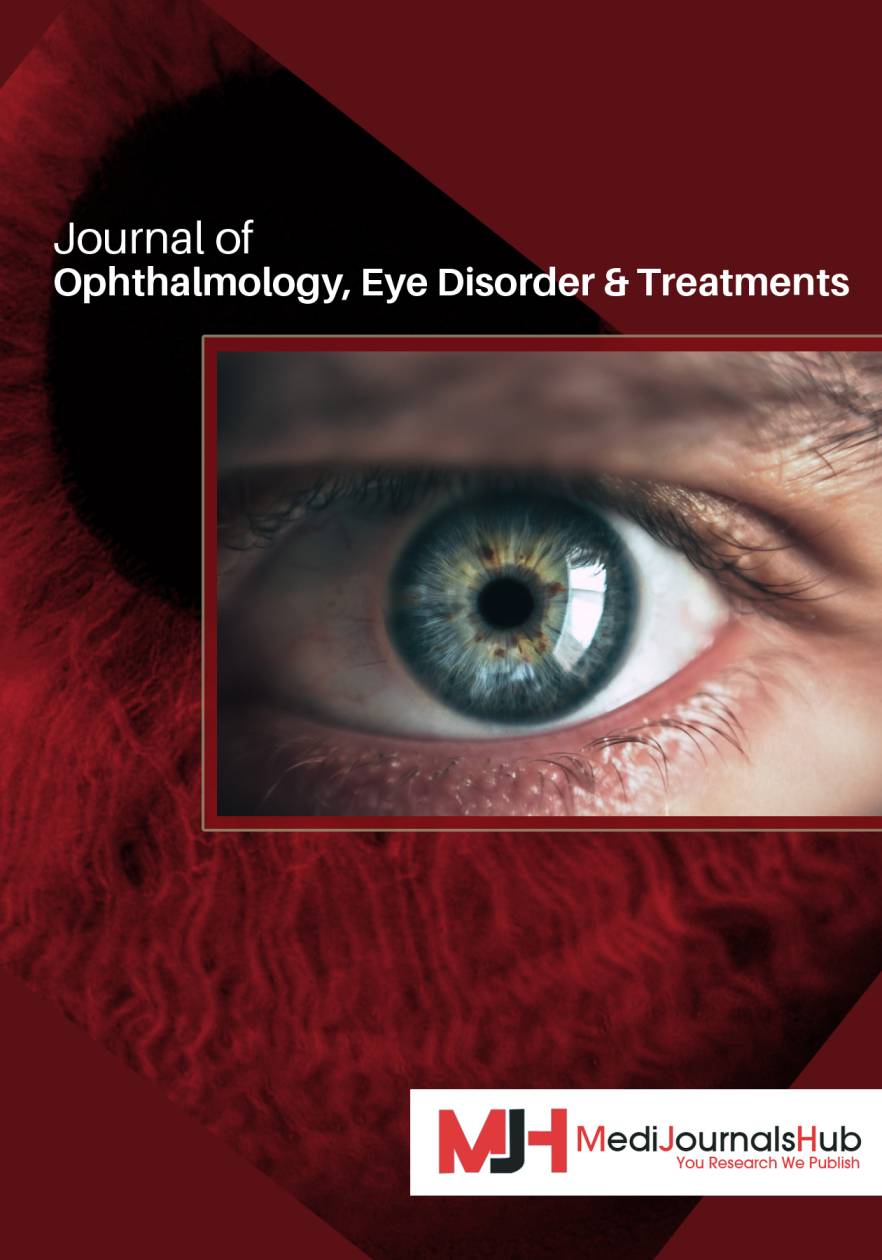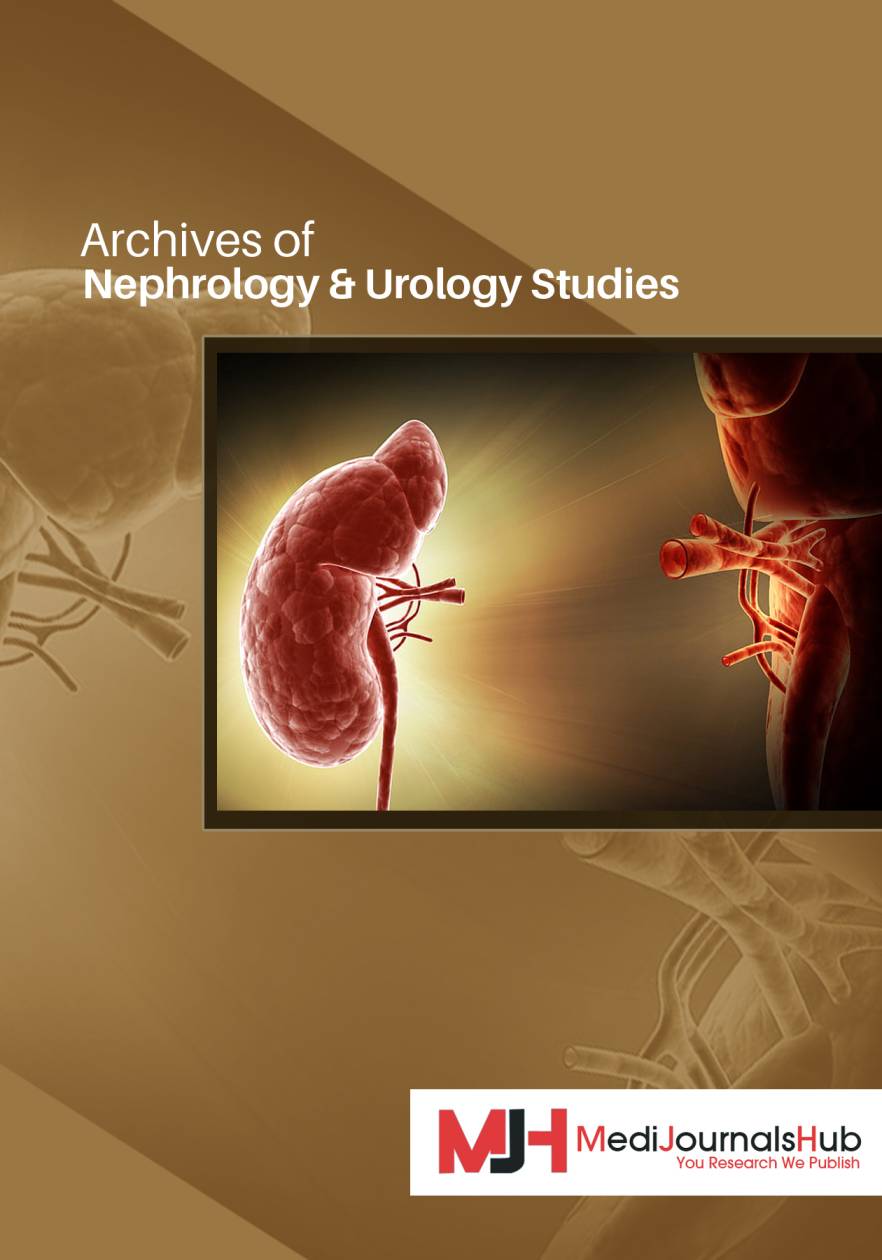- Open-Access Publishing
- Quality and Potential Expertise
- Flexible Online Submission
- Affordable Publication Charges
- Expertise Editorial Board Members
- 3 Week Fast-track Peer Review
- Global Visibility of Published Articles
Pet Ownership and Pet-Walking after Acute Myocardial Infarction: A Pet for Every Heart Attack
Sagheer Shazib, James C. Blankenship*
Division of Cardiology, University of New Mexico Health Sciences Center, Albuquerque, New Mexico
*Corresponding Author: James C. Blankenship, Division of Cardiology, University of New Mexico Health Sciences Center, Albuquerque, New Mexico, E-mail: jblankenship@salud.unm.edu
Received date: June 25, 2021; Accepted date: August 02, 2021; Published date: August 09, 2021
Citation: Shazib S, Blankenship JC. (2021) Pet Ownership and Pet-Walking after Acute Myocardial Infarction: A Pet for Every Heart Attack. J Card Cardi Sur. 1:07.
Copyright: © 2021 Shazib S. This is an open-access article distributed under the terms of the Creative Commons Attribution License, which permits unrestricted use, distribution, and reproduction in any medium, provided the original author and source are credited.
Keywords
Cardiac rehabilitation; Pets; Acute MI; Heart attack
Abstract
Cardiac rehabilitation after acute Myocardial Infarction (MI) decreases mortality. Pet ownership in general, dog ownership in particular, and regular dog-walking in addition correlate with improved post-MI outcomes. We propose an adjunct to conventional post-MI cardiac rehabilitation involving acquisition of a dog with a program of dog-walking. We hypothesize this will enhance the beneficial effects of cardiac rehabilitation with respect to physical and psychological outcomes.
Introduction
In 2003 the American Heart Association Expert Panel on Population and Prevention Science published a “Guide for Improving Cardiovascular Health at the Community Level” which set 18 goals for communities to improve the cardiovascular health of their populations [1]. This paper addresses the twelfth of those goals which was to “Increase the percentage of patients suffering acute coronary syndromes (e.g., Myocardial Infarction (MI), cardiac arrhythmias) or cerebrovascular syndromes (e.g., stroke, transient ischemic attack) who receive appropriate acute interventions within the timeframe of maximal effectiveness.” In particular, acute coronary syndromes (e.g., MI) are routinely complicated by adverse psychosocial outcomes. MI is a psychologically traumatic event, and reactions to MI have been characterized as a type of post-traumatic stress disorder [2-12]. Depression and anxiety decrease Quality of Life (QoL), are common [13-16], and are associated with mortality after MI [13,17].
Prognosis after MI is associated with many Social and Behavioral Determinants of Health (SBDH) including socioeconomic status, emotional health, social support (e.g., marriage status, participation in faith-based communities), participation in cardiac rehabilitation programs, and compliance with medications and lifestyle recommendations regarding physical activity, weight loss, and smoking [13,14,18-20]. For example, Frasure-Smith et al found that 41% of patients were depressed 7 days post-MI, and depression correlated with mortality in the first year after MI [13]. Perceived social support did not correlate with survival, but perceived social support did interact with depression to mitigate its correlation with mortality, and also correlated with decrease in depressive symptoms over the first year post-MI. A recent meta-analysis demonstrated a 31% reduction in cardiovascular death and 24 % reduction in all-cause mortality in dog owners who walked their pet compared to who individuals who did not own a dog [21].
SBDH interventions have impacted outcomes after MI in some [17-19] but not all studies [22]. American Heart Association scientific statements have suggested that more effective SBDH interventions are needed [1,23]. One example of a SBDH is pet ownership which correlates with better health and psychological status over time (compared to non-pet ownership) [24]. For example, Serpell showed that pet acquisition correlated with increased health perception compared to those who did not acquire pets [25], and pet ownership correlates with better survival after MI, even after adjustment for possible confounders [26-28]. Pet ownership seems to favorably impact depression [13,28] and cardiovascular responses to stress [29-38], mechanisms by which pet ownership may improve survival.
Beyond pet ownership or acquisition, additional benefits accrue to those who perform regular pet-walking. For example, Serpell found that the greatest health benefits among a group acquiring pets accrued to those who regularly walked their dog [25]. Dog walking correlates with increased physical activity compared to non-dog-walking pet owners [39-59], increased social interactions [60,61], and decreased cardiovascular risk factors [56,62], all of which are mechanisms by which dog walking may improve health outcomes.
According to the ARIC study of the NHLBI every 40 seconds an American has acute MI. Based on that study, annual incidence of new and recurrent AMI is 800,000 [62] Of these, about one fourth die before reaching a hospital. Of patients admitted with MI, 16% die within 30 days [6]. Depression occurs in about 40% of post-MI patients [25].
Different mechanisms have been proposed by which dog walking may be directly or indirectly linked with positive cardiovascular outcomes. Dog walking has been associated with increased level of oxytocin in the dog and the owner and reduced level of cortisol in the owner after the dog adoption [63-65]. Dog owners also have increased physical activity, positive psychological effects as a result of the companionship, improved autonomic profile, blunted stress response, and faster recovery after a stress response [49]. Dog ownership has been associated with improvement in the cardiovascular physiology, heart rate variability, lipid profile, and a decrease in systemic blood pressure [53]. Although many of these mechanisms could be the result of increased physical activity, improvement in hypertension might be the result of the direct effect of improved psychological health.
Hypothesis
We hypothesize that survivors of acute MI who do not already own dogs or cats, but who are able and willing to acquire dogs or cats after discharge, will have fewer cardiac events and better QoL compared to those able but not willing to accept dogs or cats. Further, among patients that accept dogs or cats, those who regularly walk their animal will have fewer adverse events and better QoL compared to those who do not walk their pet, or those unwilling to accept a pet.
Proposed program
Patients admitted with a principle diagnosis of acute MI should be contacted by the cardiac rehabilitation team before discharge and counseled to undergo outpatient cardiac rehabilitation. We propose that at the first outpatient cardiac rehabilitation visit, patients would be screened for participation in this program. Eligible patients would be those who (i) do not already own a dog or cat, (ii) are willing to consider acquiring a dog or cat, (iii) live in settings where animal ownership is feasible, (iv) have the physical and mental capacity to be successful pet owners, (v) have the financial resources to care for a pet, (vi) and are willing to commit to finishing the 12-week standard cardiac rehab program. Programs that wished to track outcomes and results of this project could ask their patients to complete a SF-36 QoL questionnaire initially and 1 year later, and report their experiences 1 year later. Eligible patients would be counseled about the program by cardiac rehabilitation experts at their first cardiac rehabilitation visit.
Patients willing to participate would be referred to a local participating animal shelter. Shelter personnel would provide additional information about the resources and capabilities needed for pet ownership. At the discretion of shelter personnel, patients would be allowed to select a dog or cat that has completed the shelter protocol for vaccination and animal health maintenance. Shelter personnel would assist in selecting animals whose personality and level of physical activity are appropriate for each patient’s particular personality and limitations. Shelter personnel would provide counseling about animal care and treatment.
Cardiac rehabilitation staff would monitor participants and provide encouragement during the regular 12 week cardiac rehabilitation program and encourage participants to continue their dog walking on their own indefinitely.
Feasibility interviews with stakeholders
Local Animal Shelter (LAS): This proposal was discussed with the director of the Society for the Prevention of Cruelty to Animals (SPCA) animal shelter of Danville PA. She confirmed that shelter personnel match animals with each individual’s needs and capabilities and showed animals on-site currently that would be good candidates. Her assessment was that the program had a good chance of successfully placing dogs with motivated owners-which of course is the SPCA’s primary mission.
Cardiac Rehabilitation Programs (CRB): This proposal was discussed with the program director of cardiac rehabilitation at two community hospitals. Both agreed that the proposed program was feasible, practicable, aligned with the goals of their cardiac rehabilitation programs, and offered health benefits to participants.
Potential Scope of Program (PSP): The proposed program could be implemented by any cardiac rehabilitation program in the United States. At present about one third of the 800,000 patients with heart attacks each year are referred for cardiac rehabilitation, Thus the addition of dog-walking programs could affect at most 260,000 heart attack patients per year. While some of these would already be dog walkers, the numbers could be expanded if more heart attack patients were referred for cardiac rehabilitation, or if the program were expanded to reach patients referred to cardiac rehabilitation after bypass surgery and coronary stenting.
Barriers and Limitations
We believe this program, if implemented, would be unique. Programs such as this have not previously been reported, so unanticipated barriers or problems may become apparent during the start-up phase. Foreseeable barriers to participation include many of the barriers to participating in conventional cardiac rehabilitation programs including physical limitations to exercise, lack of motivation, and lack of financial resources. Some patients live in neighborhoods where dog-walking would be impractical or even dangerous. Among patients who wished to participate, not all would leave the shelter with an animal due either to shortage of animals suitable for adoption (since many animals are too large, too wild, too active, or too loud) or a failure to find an animal that has the characteristics they require in an adopted pet (i.e., to which they can bond).
Conclusion
Pet ownership and dog walking in particular offer health benefits to the general public, which might be magnified when offered to the vulnerable population of post-MI patients undergoing cardiac rehabilitation. We propose a program of pet acquisition and regular pet-walking that would be easily implemented, inexpensive, and complementary to conventional cardiac rehabilitation programs.
Disclosure
The authors have no relationships with industry and no potential conflicts of interest.
References
01. Pearson TA, Bazzarre TL, Daniels SR, Fair JM, Fortmann SP, et al. American Heart Association guide for improving cardiovascular health at the community level. A statement for public health practitioners, healthcare providers, and health policy makers from the American Heart Association Expert Panel on Population and Prevention Science. Circulation. 107(4): 645-651 (2003).
02. Kutz I, Garb R, Favid D. Post-Traumatic Stress Disorder following myocardial infarction. Gen Hosp Psych. 10(3):169-176 (1988).
03. Rocha LP, Peterson JC, Meyers B, Boutin-Foster C, Charlson ME, et al. Incidence of posttraumatic stress disorder (PTSD) after Myocardial Infarction (MI) and predictors of PTSD symptoms post-MI: A brief report. Int J Psych Med. 38(3): 297-306 (2008).
04. Gander M-L, von Kanel R. Myocardial infarction and post-traumatic stress disorder: Frequency, outcome, and atherosclerotic mechanisms. Euro J Prevent Cardiol. 13(2): 165-172 (2006).
05. Doerfler LA, Paraskos JA. Anxiety, posttraumatic stress disorder, and depression in patients with coronary heart disease: a practical review for cardiac rehabilitation professionals. J Cardiopulm Rehab. 24(6): 414-421 (2004).
06. Wiedemar L, Schmid J-P, Muller J, Wittman L, Schnyder U, et al. Prevalence and predictors of posttraumatic stress disorder in patients with acute myocardial infarction. Heart Lung. 37(2): 113-121 (2008).
07. Guler E, Schmid J-P, Wiedemar L, Saner H, Schnyder U, von Kanel R. Clinical diagnosis of posttraumatic stress disorder after myocardial infarction. Clin Cardiol. 32(3): 125-129 (2009).
08. Von Kanel R, Begre S. Depression after myocardial infarction: Unraveling the mystery of poor cardiovascular prognosis and role of beta-blocker therapy. J Am Coll Cardiol. 48(11): 2215-7 (2006).
09. McCann UD, Fauerbach JA, Thombs BD. Anxiety and cardiac disease. Primary Psych.12: 47-50 (2005).
10. Shemesh E, Rudnick A, Kaluski E, Milovanov O, Salah A, et al. A prospective study of posttraumatic stress symptoms and nonadherence in survivors of a Myocardial Infarction (MI). Gen Hosp Psych 23: 215-222 (2001).
11. Hari R, Bergre S, Schmid J-P, Saner H, Gander M-L, et al. Change over time in posttraumatic stress caused by myocardial infarction and predicting variables. J Psychosomatic Res. 69(2): 143-150 (2010).
12. Abbas CC, Schmid J-P, Guler E, Wiedemar L, Begre S, et al. Trajectory of posttraumatic stress disorder caused by myocardial infarction: A two year follow-up study. Int J Psych Med. 39(4): 359-376 (2009).
13. Frasure-Smith N, Lesperance F, Gravel G, Masson A, Juneau M, et al. A social support, depression, and mortality during the first year after myocardial infarction. Circulation. 101(16): 1919-1924 (2000).
14. Rees K, Bennett P, West R, Smith GD, Ebrahim S. Psychological interventions for coronary heart disease. The Cochrane Library. (2013).
15. Mookadam F, Arthur HM. Social support and its relationship to morbidity and mortality after acute myocardial infarction. Systematic overview. Arch Intern Med. 164(14): 1514-1518 (2004).
16. Ruberman W, Weinblatt E, Goldberg JD, Chaudhary BS. Psychosocial influences on mortality after myocardial infarction. N Engl J Med. 311(9): 552-559 (1984).
17. Denollet J, Brutsaert DL. Reducing emotional distress improves prognosis in coronary heart disease. 9-year mortality in a clinical trial of rehabilitation. Circulation. 104(17): 2018-2023 (2001).
18. Cohen S, Janicki-Deverts D. Can we improve our physical health by altering our social networks? Persp Psych Sci. 4(4): 375-378 (2009).
19. Petrie KJ, Cameron LD, Ellis CJ, Buick D, Weinman J. Changing illness perceptions after myocardial infarction: An early intervention randomized controlled trial. Psychosomatic Med. 64(4): 580-586 (2002).
20. Smith TW, Ruiz JM. Psychosocial influences on the development and course of coronary heart disease: Current status and implications for research and practice. J Consult Clin Psych. 70(3): 548-568 (2002).
21. Kramer CK, Mehmood S, Suen RS. Dog ownership and survival: A systematic review and meta-analysis. Circ Cardiovasc Qual Outcomes. 12(10): e005554 (2019).
22. Parslow RA, Jorm AF, Christensen H, Rodgers B, Jacomb P. Pet ownership and health in older adults: findings from a survey of 2,551 community based Australians aged 60-64. Gerontology. 51(1): 40-47 (2005).
23. Leon AS, Franklin BA, Costa F, Balady GJ, Berra KA, et al. Cardiac rehabilitation and secondary prevention of coronary heart disease. An American Heart Association Scientific Statement from the Council on Clinical Cardiology (Subcommittee on Exercise, Cardiac Rehabilitation, and Prevention) and the Council on Nutrition, Physical Activity, and Metabolism (Subcommittee on Physical Activity), in Collaboration with the American Association of Cardiovascular and Pulmonary Rehabilitation. Circulation 111(3): 369-376 (2005).
24. Raina P, Waltner-Toews D, Bonnett B, Woodward C, Abernathy T. Influence of companion animals on the physical and psychological health of older people: An analysis of a one-year longitudinal study. J Am Geriatr Soc. 47(3): 323-329 (1999).
25. Serpell J. Beneficial effects of pet ownership on some aspects of human health and behaviour. J R Soc Med. 84(12): 717-720 (1991).
26. Friedmann E, Thomas SA. Pet ownership, social support, and one-year survival after acute myocardial infarction in the Cardiac Arrhythmia Suppression Trial (CAST). Am J Cardiol. 76(17): 1213-1217 (1995).
27. Friedmann E, Katcher AH, Lynch JJ, Thomas SA. Animal companions and one-year survival of patients after discharge from a coronary care unit. Public Health Rep. 95(4): 307-312 (1980).
28. Friedmann E, Thomas SA, Son H. Pets, depression and long term survival in community living patients following myocardial infarction. Anthrozoos. 24(3): 273-285 (2011).
29. Allen K, Blascovich J, Mendes WB. Cardiovascular reactivity and the presence of pets, friends, and spouses: The truth about cats and dogs. Psychosom Med. 64(5): 727-739 (2002).
30. Wright JD, Kritz-Silverstein D, Morton DJ, Wingard DL, Barrett-Connor E. Pet ownership and blood pressure in old age. Epidemiology. 18(5): 613-618 (2007).
31. Friedmann E, Thomas SA, Stein PK, Kleiger RE. Relation between pet ownership and heart rate variability in patients with healed myocardial infarcts. Am J Cardiol. 91(6): 718-721 (2003).
32. Allen K, Shykoff BE, Izzo JL Jr. Pet ownership, but not ACE inhibitor therapy, blunts home blood pressure responses to mental stress. Hypertension. 38(4): 815-820 (2001).
33. DeMello LR. The effect of the presence of a companion-animal on physiological changes following the termination of cognitive stressors. Psychol Health. 14(5): 859-868 (1999).
34. Aiba N, Hotta K, Yokoyama M, Wang G, Tabata M, et al. Usefulness of pet ownership as a modulator of cardiac autonomic imbalance in patients with diabetes mellitus, hypertension, and/or hyperlipidemia. Am J Cardiol. 109(8): 1164-1170 (2012).
35. Jenkins JL. Physiological effects of petting a companion animal. Psychol Rep. 58(1): 21-22 (1986).
36. Vormbrock JK, Grossberg JM. Cardiovascular effects of human-pet dog interactions. J Behav Med. 11(5): 509-517 (1988).
37. Kingwell BA, Lomdahl A, Anderson WP. Presence of a pet dog and human cardiovascular responses to mild mental stress. Clin Auton Res. 11(5): 313-317 (2001).
38. Straatman I, Hanson EKS, Endenburg N, Mol JA. The influence of a dog on male students during a stressor. Anthrozoos. 10(4): 191-197 (1997).
39. Oka K, Shibata A. Dog ownership and health-related physical activity among Japanese adults. J Phys Act Health. 6(4): 412-418 (2009).
40. Thorpe RJ Jr, Kreisle RA, Glickman LT, Simonsick EM, Newman AB, et al. Physical activity and pet ownership in year 3 of the Health ABC study. J Aging Phys Act. 14(2): 154-168 (2006).
41. Cutt H, Giles-Corti B, Knuiman M, Timperio A, Bull F. Understanding dog owners’ increased levels of physical activity: Results from RESIDE. Am J Public Health. 98(1): 66-69 (2008).
42. Brown SG, Rhodes RE. Relationships among dog ownership and leisure-time walking in Western Canadian adults. Am J Prev Med. 30(2): 131-136 (2006).
43. Schofield G, Mummery K, Steele R. Dog ownership and human health related physical activity: An epidemiological study. Health Promot J Austr. 16(1): 15-19 (2005).
44. Yabroff KR, Troiano RP, Berrigan D. Walking the dog: Is pet ownership associated with physical activity in California? J Phys Act Health. 5(2): 216-228 (2008).
45. Reeves MJ, Rafferty AP, Miller CE, Lyon-Callo SK. The impact of dog walking on leisure-time physical activity: results from a population-based survey of Michigan adults. J Phys Act Health. 8(3): 436-444 (2011).
46. Sirard JR, Patnode CD, Hearst MO, Laska MN. Dog ownership and adolescent physical activity. Am J Prev Med. 40(3): 334-337 (2011).
47. Owen CG, Nightingale CM, Rudnicka AR, Ekelund U, McMinn AM, et al. Family dog ownership and levels of physical activity in childhood: Findings from the child heart and health study in England. Am J Public Health. 100(9): 1669-1671 (2010).
48. Gillum RF, Obisesan TO. Living with companion animals, physical activity and mortality in a U.S. national cohort. Int J Environ Res Public Health. 7(6): 2452-2459 (2010).
49. Ham SA, Epping J. Dog walking and physical activity in the United States. Prev Chronic Dis. 3(2): A47 (2006).
50. Bauman AE, Russell SJ, Furber SE, Dobson AJ. The epidemiology of dog walking: An unmet need for human and canine health. Med J Aust. 175(11-12): 632-634 (2001).
51. Christian HE, Westgarth C, Bauman A, Richards EA, Rhodes R, et al. Dog ownership and physical activity: A review of the evidence. J Phys Act Health. 10(5): 750-9 (2012).
52. Hoerster KD, Mayer JA, Sallis JF, Pizzi N, Talley S, et al. Dog walking: Its association with physical activity guideline adherence and its correlates. Prev Med. 52(1): 33-38 (2011).
53. Christian nee Cutt H, Giles-Corti B, Knuiman M. “I’m Just a’-Walking the Dog” correlates of regular dog walking. Fam Community Health. 33(1): 44-52 (2010).
54. Cutt H, Giles-Corti B, Knuiman M. Encouraging physical activity through dog walking: Why don’t some owners walk with their dog? Prev Med. 46(2): 120-126 (2008).
55. Coleman KJ, Rosenberg DE, Conway TL, Sallis JF, Saelens BE, et al. Physical activity, weight status, and neighborhood characteristics of dog walkers. Prev Med. 47(3): 309-312 (2008).
56. Cutt H, Giles-Corti B, Knuiman M, Burke V. Dog ownership, health and physical activity: A critical review of the literature. Health Place. 13(1): 261-272 (2007).
57. Cutt HE, Knuiman MW, Giles-Corti B. Does getting a dog increase recreational walking? Int J Behav Nutr Phys Act. 5:17-48 (2008).
58. Salmon J, Timperio A, Chu B, Veitch J. Dog ownership, dog walking, and children’s and parents’ physical activity. Res Q Exerc Sport. 81(3): 264-271 (2010).
59. Messent PR. Pets as social facilitators. Vet Clin North Am Small Anim Pract. 15(2): 387-393 (1985).
60. Rogers J, Hart LA, Boltz RP. The role of pet dogs in casual conversations of elderly adults. J Soc Psychol. 133(3): 265-277 (1993).
61. Lentino C, Visek AJ, McDonnell K, DiPietro L. Dog walking is associated with a favorable risk profile independent of moderate to high volume of physical activity. J Phys Act Health. 9(3): 414-420 (2012).
62. Go AS, Mozaffarian D, Roger VL, Benjamin EJ, Berry JD, et al. On behalf of the American Heart Association Statistics Committee and Stroke Statistics Subcommittee. Heart disease and stroke statistics-2013 update: A report from the American Heart Association. Circulation. 127: e6-e245 (2013).
63. Petersson M, Uvnäs-Moberg K, Nilsson A, Gustafson LL, Hydbring-Sandberg E, et al. Oxytocin and cortisol levels in dog owners and their dogs are associated with behavioral patterns: An exploratory study. Front Psychol. 8: 1796 (2017).
64. Nagasawa T, Ohta M, Uchiyama H. Effects of the characteristic temperament of cats on the emotions and hemodynamic responses of humans. PLoS One. 15(6): e0235188 (2020).
65. Centers for Disease Control and Prevention. Use of outpatient cardiac rehabilitation among heart attack survivors- 20 states and the District of Columbia, 2013 and four states 2015. MMWR Morb Mortal Wkly Rep. 66(33): 869-873 (2017).





